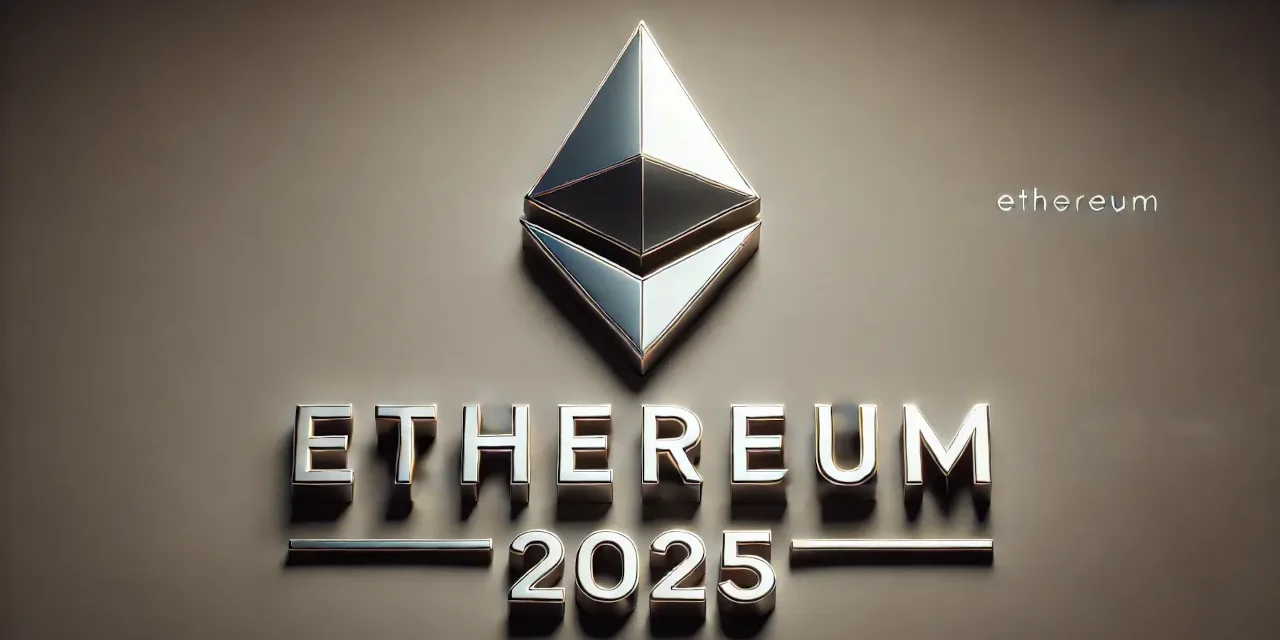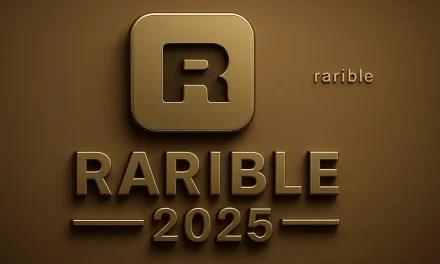Origins and Architecture
The origins of Ethereum trace back to a moment of discontent within the cryptocurrency community. In late 2013, Vitalik Buterin, a young Russian-Canadian programmer and co-founder of Bitcoin Magazine, published a whitepaper proposing a platform that would transcend Bitcoin’s limited scripting language. Whereas Bitcoin functioned primarily as a decentralized ledger for monetary transactions, Buterin envisioned a general-purpose blockchain with the capacity to support decentralized applications (dApps). This vision, initially dismissed by many in the Bitcoin developer community as needlessly complex, became the conceptual seed of Ethereum.
Ethereum was officially announced in January 2014 at the North American Bitcoin Conference in Miami. Its founding team was both technically diverse and ideologically ambitious, including Buterin, Gavin Wood, Charles Hoskinson, Anthony Di Iorio, Mihai Alisie, Joseph Lubin, and Jeffrey Wilcke. Each founder brought a different perspective: Wood contributed the formal definition of the Ethereum Virtual Machine (EVM) and authored the project’s Yellow Paper, while Lubin would later play a major role in the project’s commercial ecosystem via ConsenSys. The collective’s motivations ranged from idealistic—creating a decentralized world computer—to pragmatic, such as building infrastructure for the next generation of blockchain-based applications.
To fund development, the Ethereum Foundation launched a crowdsale in mid-2014, offering pre-mined ether (ETH) in exchange for bitcoin (BTC). The sale raised over 31,000 BTC, worth approximately $18 million at the time, making it one of the largest crowdfunding efforts in the early crypto era. The Ethereum Foundation, a non-profit based in Zug, Switzerland, used these funds to finance core protocol development. Its structure set the tone for Ethereum’s development ethos: decentralized, open-source, but guided by a core team with a long-term vision.
Ethereum’s architecture introduced a novel model in which every node on the network runs a fully programmable virtual machine. The Ethereum Virtual Machine (EVM) is a Turing-complete environment capable of executing code written in high-level programming languages like Solidity and Vyper. This flexibility enabled the development of smart contracts—self-executing scripts that encode the rules and logic of an agreement. From the start, Ethereum was positioned as a base layer for a decentralized economy, with the EVM acting as a trustless global execution engine.
Technically, Ethereum launched as a Layer 1 proof-of-work blockchain, similar in structure to Bitcoin but with more expansive ambitions. It featured faster block times (initially around 15 seconds compared to Bitcoin’s 10 minutes) and a more expressive scripting language. These decisions increased Ethereum’s attack surface but made it far more versatile. Rather than serving only as digital money, ether became the “fuel” for computation, paid as gas fees by users to incentivize miners to execute and validate smart contracts.
Early milestones came quickly. The Ethereum mainnet went live in July 2015 with the release of “Frontier,” a barebones implementation intended for early developers. Within a year, Ethereum underwent multiple planned upgrades, known as “hard forks,” each marking a new phase in the protocol’s maturation. These included “Homestead” in 2016, which stabilized network features and improved security, and “Metropolis,” split into Byzantium and Constantinople, which incrementally improved privacy, performance, and developer tools.
The first major test of Ethereum’s real-world utility—and its first existential crisis—came with the launch of The DAO in 2016. The DAO (Decentralized Autonomous Organization) was a venture capital fund governed entirely by smart contracts, built atop Ethereum’s infrastructure. It raised over $150 million in ether, only to be catastrophically exploited due to vulnerabilities in its code. The Ethereum community controversially opted to perform a hard fork to reverse the theft, effectively creating two parallel chains: Ethereum (ETH) and Ethereum Classic (ETC). This event defined Ethereum’s governance dynamics and highlighted the tension between code immutability and human intervention.
From a philosophical standpoint, Ethereum’s launch marked a distinct shift in blockchain theory. Where Bitcoin adhered to a minimalist monetary policy and a narrowly scoped feature set, Ethereum embraced generality and programmability. This difference extended to governance as well. Ethereum’s informal leadership structure, dominated early on by Buterin and the Ethereum Foundation, operated more like an open-source software project than a protocol ossified by consensus. This flexibility allowed Ethereum to evolve rapidly, but it also introduced complex challenges related to scaling, security, and protocol upgrades.
As the Ethereum ecosystem grew, so did its ambitions. Developers launched decentralized exchanges, synthetic asset platforms, and even entire financial systems under the banner of decentralized finance (DeFi). By 2018, Ethereum had become the default platform for Initial Coin Offerings (ICOs), raising billions in capital and attracting both innovation and regulatory scrutiny. The platform’s flexibility made it fertile ground for experimentation, but its proof-of-work consensus mechanism struggled to keep up with the increasing demand. This performance bottleneck catalyzed the move toward Ethereum 2.0, a multi-year transition that would redefine its consensus model and economic incentives.
The Ethereum Foundation and its adjacent developer collectives continued to champion a roadmap centered on scalability, security, and sustainability. This roadmap included a shift to proof-of-stake, sharding for throughput, and Layer 2 rollups to offload computation. While Bitcoin positioned itself as digital gold, Ethereum aimed to be programmable infrastructure—a platform for trustless interaction across finance, governance, and identity.
By the time Ethereum celebrated its fifth anniversary in 2020, it had matured from an ambitious experiment into the bedrock of a rapidly expanding digital economy. The platform’s architecture—flexible yet secure, general-purpose yet deeply economic—remained its defining characteristic. Ethereum had not only introduced a new technological paradigm but also catalyzed a philosophical shift in how blockchains could be used. It was no longer sufficient to record transactions; Ethereum aimed to rewrite the architecture of human agreement.
Consensus and Monetary Policy
Ethereum’s early consensus mechanism mirrored Bitcoin’s in its reliance on proof-of-work (PoW), but the limitations of this model soon became apparent. As network usage soared in 2017–2020, the environmental and economic inefficiencies of PoW—combined with mounting scalability concerns—pushed Ethereum toward a more energy-efficient and adaptable model. The shift culminated in one of the most ambitious undertakings in blockchain history: Ethereum’s transition to proof-of-stake (PoS), known colloquially as “The Merge.”
After years of research and development, Ethereum executed The Merge on September 15, 2022, seamlessly transitioning its consensus from the energy-intensive Ethash mining algorithm to a PoS system anchored by the Beacon Chain. The shift eliminated Ethereum’s dependence on miners, replacing them with validators who stake ether (ETH) to secure the network. Rather than expending electricity to solve cryptographic puzzles, validators are selected probabilistically to propose and attest to new blocks, earning rewards for honest participation and risking slashed deposits for misconduct.
The transition was not merely technical—it marked a profound transformation in Ethereum’s monetary structure. Under proof-of-work, Ethereum maintained an uncapped supply with an average annual issuance rate between 4% and 5%. With PoS, issuance dropped dramatically. The base issuance rate now hovers near 0.5%, depending on the total amount of ETH staked. This reduced issuance was designed to offset dilutionary effects and align token emissions with network security needs, creating a more sustainable economic model.
The introduction of Ethereum Improvement Proposal 1559 (EIP-1559), activated in August 2021 during the London hard fork, added another deflationary mechanism. EIP-1559 restructured Ethereum’s fee market by splitting transaction fees into a base fee—automatically burned—and an optional tip, paid to validators. This burn mechanism permanently removes ETH from circulation, introducing negative issuance during periods of high network activity. The combination of reduced PoS issuance and ongoing fee burning has, at times, rendered Ethereum net deflationary—a rare feature among major cryptocurrencies.
As of April 2025, Ethereum has a circulating supply of approximately 120.69 million ETH, unchanged since The Merge due to near-parity between new issuance and burned fees. The current market price stands at $1,603, yielding a total market capitalization of $193.5 billion and ranking Ethereum second among all cryptocurrencies by market cap. Ethereum commands a 7.2% market dominance, underscoring its continued prominence despite recent drawdowns and broader market volatility.
Validator incentives under PoS are central to Ethereum’s new tokenomics. To participate in consensus, validators must lock up a minimum of 32 ETH. These deposits are subject to a dynamic reward schedule that balances incentives with inflation control. Validators earn rewards by proposing and attesting to blocks, but risk having a portion of their stake slashed if they engage in dishonest behavior or prolonged inactivity. This system ensures strong economic alignment between protocol integrity and validator behavior.
Importantly, the move to staking has altered Ethereum’s liquidity profile. While traditional PoW miners could sell block rewards immediately, staked ETH is often locked for extended periods, either natively or via staking services. Liquid staking protocols like Lido, Rocket Pool, and institutional offerings from exchanges now facilitate synthetic liquidity, allowing stakers to trade derivative tokens such as stETH. These mechanisms create secondary markets but also introduce systemic risks, particularly around centralization and dependency on smart contract security.
The staking ratio—i.e., the proportion of circulating ETH locked in staking contracts—has hovered between 22% and 25% since mid-2024. This moderate participation level reflects a balance between capital efficiency and security. While higher staking rates can increase network resilience, they also constrain ETH’s liquidity and limit its availability for use in decentralized finance (DeFi), collateralization, and other economic functions.
Ethereum’s monetary architecture thus represents a delicate equilibrium: low base issuance to reduce inflation, periodic fee burning to create deflationary pressure, and validator economics designed to secure the network without excessive capital lockup. This model stands in contrast to Bitcoin’s fixed supply and halving cycles, offering a more flexible but complex approach to token economics.
Still, Ethereum’s monetary design is not without criticism. Some argue that the reliance on fee burning during periods of network congestion can introduce volatility to the token’s economic profile. Others express concern over the growing concentration of staking power among liquid staking protocols and centralized exchanges. While Ethereum aims for neutrality and decentralization, its tokenomic realities increasingly reflect the tension between protocol design and market pragmatism.
The post-Merge landscape also raises questions about Ethereum’s role as a store of value versus a utility asset. While deflationary tendencies may support its store-of-value narrative, the token’s use as gas, collateral, and staking capital makes it deeply embedded in the system’s economic infrastructure. Unlike Bitcoin, which aspires toward monetary finality, Ethereum remains functionally entangled in its broader application layer—a design choice that both enriches and complicates its monetary role.
The Merge was not the end of Ethereum’s monetary evolution. It paved the way for a series of future upgrades, including “The Surge,” which introduces proto-danksharding to enhance rollup scalability, and “The Scourge,” aimed at mitigating centralization risks in block construction. Each phase of this roadmap carries implications for ETH’s economic behavior, particularly in how it affects gas fees, validator incentives, and network throughput.
In the broader context of decentralized finance and Web3, Ethereum’s monetary policy now functions as a macroeconomic layer. It not only secures the protocol but also dictates capital flows, pricing models, and user behavior across a growing ecosystem. Ethereum has effectively become a programmable monetary system—one whose internal dynamics are constantly redefined by protocol upgrades and market responses.
Token Utility and Distribution
Ethereum’s token, ether (ETH), is often described as a multi-functional asset—a computational commodity, a staking instrument, a unit of exchange, and a store of value. Unlike Bitcoin, whose utility is largely singular, ETH plays a central and dynamic role within the protocol it supports. Its design reflects a philosophy of embedded utility: to use Ethereum is, by necessity, to use ETH.
The most immediate use case for ETH is as gas—payment for computation. Every interaction on the Ethereum network, whether a simple ETH transfer or the execution of a complex smart contract, incurs a fee denominated in ETH. These fees, paid by users and developers alike, are essential for prioritizing network activity and compensating validators. Gas fees are algorithmically priced based on network congestion and resource usage, a structure formalized by EIP-1559. This design ensures that ETH is not merely a transactional medium but an intrinsic requirement for any on-chain action.
Staking represents the second cornerstone of ETH’s utility. Since Ethereum’s transition to proof-of-stake, ETH has become the collateral that underpins network security. Validators must lock ETH to gain the right to propose and attest to blocks, earning rewards in return. As of early 2025, over one-fifth of all circulating ETH is staked. This capital lockup introduces opportunity costs and yield dynamics that closely resemble fixed-income instruments in traditional finance, especially when paired with liquid staking solutions. These derivatives—such as stETH or rETH—allow ETH to remain productive even while bonded, further embedding it into decentralized finance (DeFi).
ETH also serves as collateral across a wide range of DeFi protocols. It underpins lending markets on platforms like Aave and Compound, provides liquidity in automated market makers such as Uniswap, and backs stablecoins like DAI through protocols such as MakerDAO. This role as a reserve asset makes ETH an essential layer of Ethereum’s financial infrastructure. Its deep liquidity and programmability allow it to support an entire ecosystem of decentralized credit and leverage.
Despite its pervasive use, ETH’s initial distribution was notably centralized compared to Bitcoin’s. In 2014, Ethereum conducted a public crowdsale that raised approximately $18 million, with 60 million ETH sold to participants and another 12 million allocated to the Ethereum Foundation and early contributors. While the sale was open and global, it lacked the mining-based fair launch ethos favored by some in the Bitcoin community. This early allocation concentrated a meaningful share of ETH in the hands of insiders and the founding team.
Over time, however, distribution has gradually decentralized. The rise of DeFi, non-fungible tokens (NFTs), and retail staking has expanded ETH ownership across millions of addresses. Yet, structural imbalances remain. On-chain data suggests that a significant portion of ETH is still held by a small cohort of addresses, including centralized exchanges, institutional staking providers, and the Ethereum Foundation itself. These concentrations introduce governance and economic risks, particularly in matters of upgrade signaling and consensus power.
Moreover, liquid staking has led to new forms of concentration. Protocols like Lido have attracted a dominant share of staked ETH, raising concerns about validator diversity and protocol-level capture. While Lido operates as a decentralized autonomous organization (DAO), its influence over Ethereum’s consensus layer continues to spark debate within the developer community. Proposals to cap staking dominance or introduce mechanisms for validator set decentralization reflect the ongoing tension between efficiency and resilience.
ETH’s supply dynamics are also distinctive. Unlike Bitcoin’s capped 21 million supply, Ethereum has no hard limit. Instead, its supply is governed by the interplay between issuance (now minimized under PoS) and fee burning (via EIP-1559). This creates an elastic supply regime—capable of being deflationary during periods of high usage, or modestly inflationary during low-activity phases. While this model lacks the fixed-scarcity narrative of Bitcoin, it aligns with Ethereum’s view of ETH as a utility asset: supply should adapt to usage, not ideology.
This elasticity offers flexibility but introduces trade-offs. In periods of low on-chain activity, the burn rate declines and net issuance rises, subtly increasing ETH’s circulating supply. Conversely, during surges in DeFi or NFT activity, burn rates can exceed issuance, shrinking the total supply. This variability means ETH’s monetary properties are contingent upon network usage, which, in turn, is influenced by user demand, protocol upgrades, and external market conditions.
The long-term sustainability of ETH’s tokenomics depends on several interlocking assumptions. First, that user demand for block space will remain high enough to sustain security budgets through base fees and tips. Second, that the validator ecosystem remains sufficiently decentralized and robust against cartelization. And third, that the token’s multifaceted utility continues to reinforce demand in a way that supports both liquidity and long-term holding.
Ethereum’s approach—eschewing a rigid supply cap in favor of programmable monetary levers—positions it as an adaptive platform rather than a static asset. In doing so, it mirrors the flexibility of fiat monetary systems, albeit without central bank discretion. Its tokenomics are encoded, transparent, and modifiable only through consensus, yet they retain the capacity for self-adjustment via usage-based mechanisms.
Looking forward, Ethereum’s economic foundation is likely to remain a topic of refinement and debate. Upcoming network upgrades may introduce further changes to staking dynamics, gas pricing, and validator structure. Meanwhile, new use cases—such as restaking, modular rollups, and protocol-native stablecoins—may alter the economic pressure points on ETH itself. The network’s long-term viability will rest not only on its technical soundness, but also on its ability to sustain economic incentives that align all layers of participation.
Ethereum’s tokenomics represent an ongoing experiment in programmable finance. Rather than a one-time design, ETH’s utility and distribution are continuously shaped by evolving infrastructure, community consensus, and real-world demand. In this, Ethereum has established itself not just as a smart contract platform, but as a living economic system—dynamic, imperfect, and persistently under construction.
Threat Models and Defensive Architecture
Ethereum, since its inception in 2015, has evolved from a nascent smart contract platform into the bedrock of decentralized finance, tokenized assets, and blockchain-based governance. Yet its prominence has rendered it an attractive target for adversaries. From early scripting bugs to contemporary validator collusion risks, Ethereum’s defensive architecture has undergone a dramatic transformation. Its threat model today is layered, dynamic, and, arguably, more complex than that of any other public blockchain.
At launch, Ethereum’s architecture inherited the decentralized ethos of Bitcoin but extended the design space considerably through Turing-complete contracts. This expressive power, while critical to Ethereum’s value proposition, dramatically expanded its attack surface. Every additional opcode introduced a new vector for resource exhaustion or behavioral manipulation. The earliest threat models focused on preventing state denial-of-service (DoS) attacks, securing transaction ordering, and limiting gas abuse — notably seen in the 2016 Shanghai DoS attacks, where attackers spammed the network with underpriced operations to clog the state trie and bloat block sizes.
These formative incidents prompted aggressive recalibrations of gas costs, the introduction of resource pricing reviews, and an enhanced Ethereum Improvement Proposal (EIP) process that now systematically considers DoS implications of proposed changes. But more fundamentally, they established a precedent: Ethereum’s design-time choices would be shaped not just by functionality or decentralization ideals, but by observed adversarial behavior in the wild.
One of the most consequential inflection points in Ethereum’s security trajectory came with the aftermath of The DAO hack in 2016. Exploiting a reentrancy flaw in a smart contract, the attacker siphoned off millions in ETH, prompting a community-led hard fork that effectively rewrote history. From a protocol standpoint, the incident crystalized the separation between base-layer consensus security and application-layer risks. It also seeded the enduring governance schism between Ethereum and Ethereum Classic. The episode reinforced that while Ethereum the platform could technically revert malicious actions, doing so came at a reputational and philosophical cost.
As Ethereum matured, so too did its threat models. The launch of Ethereum 2.0 and the Beacon Chain introduced a fully reimagined consensus paradigm — transitioning from proof-of-work (PoW) to proof-of-stake (PoS). This shift fundamentally reconfigured assumptions about Sybil resistance, chain finality, and validator accountability. Unlike Bitcoin, where economic security is tied to hardware and electricity, Ethereum’s PoS model anchors security in stake deposits and slashing conditions. This creates a different class of adversarial scenarios, including long-range attacks, equivocation, and stake grinding.
In PoS Ethereum, Sybil resistance is achieved through economic gating: validators must deposit 32 ETH to participate. While this sets a non-trivial bar, critics argue that capital-based gating introduces plutocratic risk — an adversary with substantial funds can exert disproportionate influence. To mitigate validator centralization, Ethereum supports mechanisms like validator churn limits and random shuffling using RANDAO with VDF-based enhancements, although these remain areas of active research.
Ethereum’s model must also withstand 51% attacks, albeit under PoS this involves controlling over half the staked ETH, rather than computational hash power. The system introduces slashing penalties for double-signing or surround voting, which are designed to make such attacks economically irrational. However, the potential for cartelization among large staking services — including exchanges and liquid staking protocols — continues to present a systemic risk, especially in an environment with few socially coordinated countermeasures.
Another dimension of Ethereum’s resilience lies in its approach to validator accountability and liveness. Clients must not only avoid misbehavior but maintain near-constant uptime to remain profitable. Failures to validate attestations or propose blocks in a timely fashion result in inactivity penalties. To support this, Ethereum encourages client diversity — both in terms of software implementations (such as Prysm, Lighthouse, and Teku) and geographic distribution. A monoculture in client software presents a single point of failure, as illustrated by the Medalla testnet incident in 2020, where a Prysm bug cascaded into a majority outage.
Client diversity is further supported by Ethereum’s use of the p2p gossip layer and fork choice rules that reduce reliance on any one perspective. Still, concerns remain about the relatively high share of validators using dominant clients. Recent initiatives such as the “Execution Diversity Program” and funding for minority clients aim to rebalance this distribution. Ethereum’s security engineers increasingly view heterogeneity — in codebases, validator geographies, and organizational structures — as a strategic defense against correlated failures and targeted exploits.
Resilience in Ethereum also extends to its failover mechanisms. The fork choice rule — “LMD-GHOST” in the Beacon Chain — helps mitigate certain types of reorg and delay attacks by weighting votes according to recent validator activity. Proposer Boost, a more recent modification, improves responsiveness during high-load periods. Ethereum’s slashing conditions, validator exit protocols, and sync committees work in concert to ensure finality can be achieved even under stress, though the balance between speed, safety, and decentralization remains an open area of calibration.
A key lesson from Ethereum’s journey is that threat models are not static. They evolve in tandem with the protocol’s scale, user behaviors, and adversary sophistication. Ethereum’s layered approach — combining protocol incentives, client diversity, failover architectures, and active monitoring — reflects an understanding that no single measure suffices. Rather, resilience is achieved through the accumulation of overlapping defenses, continuously revised in the face of empirical threats.
Consensus Integrity and Cryptographic Assurance
Ethereum’s transition from proof-of-work (PoW) to proof-of-stake (PoS) in September 2022 marked one of the most ambitious overhauls in the history of public blockchains. Known as “The Merge,” this shift fundamentally altered the foundation upon which Ethereum’s consensus security rests. While the PoW era emphasized computational resource constraints as a deterrent to malicious behavior, PoS refocuses security assumptions on economic skin-in-the-game, cryptographic identity, and stake-weighted accountability. The change brought measurable energy savings but also recalibrated the protocol’s security guarantees.
Under Ethereum’s current PoS system, consensus integrity is upheld by a rotating set of validators who are pseudo-randomly selected to propose blocks and attest to their validity. Each validator is required to post a 32 ETH bond, creating an economic cost for misbehavior. At the heart of this system is the Casper FFG (Friendly Finality Gadget), which overlays finality checkpoints on top of the LMD-GHOST fork choice rule. Blocks that receive sufficient attestations from active validators are considered finalized, with subsequent reversions requiring a large proportion of stake to be slashed — effectively burning capital to override history.
Slashing is the protocol’s principal enforcement mechanism. Validators who attempt equivocation (e.g., signing conflicting blocks or attestations) are subject to punitive loss of stake. These penalties are not only financial but reputational; public slashings are logged on-chain, allowing external monitoring services and staking providers to evaluate operator behavior. The slashing mechanism is calibrated to make short-range attacks irrational and long-range attacks infeasible without social coordination to override the protocol.
Yet slashing alone is not a panacea. Ethereum’s designers have complemented it with additional safeguards, such as the inactivity leak: a progressive penalty applied to validators who fail to participate in consensus over extended periods. This ensures network liveness can be restored even if a significant portion of validators goes offline, as honest minority validators eventually recover control by default. Liveness, in this model, becomes not just a function of honest majority but of continued availability — a property carefully monitored during real-world stress tests and upgrades.
The security assumptions behind Ethereum’s PoS are further reinforced by its use of robust cryptographic primitives. The backbone of validator authentication and consensus voting is BLS (Boneh–Lynn–Shacham) signatures, which support signature aggregation. This property allows thousands of validator attestations to be collapsed into a single succinct signature, greatly reducing network bandwidth and block size constraints. The use of BLS is not without trade-offs — particularly in complexity and resistance to certain types of subgroup attacks — but has proven effective in scaling Ethereum’s validator set, which now exceeds 800,000 entities globally.
Ethereum’s roadmap also embraces more advanced cryptographic constructs. SNARKs and STARKs — zero-knowledge proof systems enabling succinct verification of computations — have become integral to Ethereum’s scalability and, increasingly, its security architecture. While not embedded in the consensus layer itself, these tools are foundational to rollup technologies like zkSync, Scroll, and StarkNet. By enabling off-chain computation with on-chain verifiability, they help reduce load on Ethereum’s base layer while preserving trust minimization. These same technologies are also being explored for light client proofs and state availability guarantees — both relevant to the long-term integrity of the Ethereum ecosystem.
Formal methods play a growing role in Ethereum’s consensus reliability. Critical protocol components, such as the Beacon Chain specification, have been modeled in languages like TLA+ and Dafny, enabling rigorous reasoning about safety and liveness properties. These formalizations allow researchers and engineers to identify edge-case bugs, race conditions, or incentive misalignments that might not surface through traditional testing. Although full formal verification of the entire Ethereum codebase remains aspirational, discrete modules — especially those governing validator behavior and signature validation — have undergone such scrutiny.
The protocol’s openness also extends to its security review process. Ethereum operates one of the most mature and publicly visible bug bounty programs in the blockchain space, coordinated through the Ethereum Foundation. Rewards scale with severity and potential impact, incentivizing responsible disclosure of vulnerabilities in both execution and consensus layers. The Merge, in particular, was preceded by months of stress testing, white-hat probing, and multi-client simulations — resulting in several critical bugs being patched before mainnet deployment.
Auditing is distributed across multiple actors. Clients like Lighthouse (by Sigma Prime) and Teku (by ConsenSys) have internal audit procedures and peer-reviewed codebases. Community efforts such as the Ethereum Execution Layer Specification (EELS) aim to harmonize understanding across implementations, reducing the likelihood of consensus divergences. Ethereum’s multi-client architecture itself is a safeguard: with four major consensus clients in active use, any implementation bug affecting one client is unlikely to cascade unless that client dominates the validator set — a scenario that Ethereum’s ecosystem monitors closely.
Nevertheless, some challenges persist. The rise of liquid staking protocols has concentrated voting power in large validator pools, potentially weakening the intended stake-weighted dispersion. Incidents such as a misconfigured MEV relay or a consensus client bug in a dominant operator could trigger widespread disruption. Ethereum’s security posture recognizes this and has introduced tools like Distributed Validator Technology (DVT) to spread signing responsibilities across multiple entities, thereby reducing single-operator risk.
Additionally, the network has taken steps to guard against long-range attacks and light client manipulation. Synchronization committees — small rotating groups of validators — provide timely signature data for clients syncing to the head of the chain. While still being refined, this system aims to balance performance and trust, enabling new or offline clients to securely rejoin the network without relying on trusted intermediaries.
From a historical perspective, Ethereum’s consensus integrity has matured through iteration, incident response, and formalization. Unlike monolithic systems, Ethereum’s modular consensus — with separable execution, consensus, and data layers — enables incremental upgrades without full-system redeployment. The upcoming inclusion of data availability sampling and proto-danksharding, while primarily focused on scaling, also have implications for data integrity and resistance to censorship.
In its current form, Ethereum’s consensus model offers a blend of economic deterrence, cryptographic assurance, and systemic redundancy. The transition to PoS redefined the contours of validator accountability, aligning protocol-level incentives with cryptographically verifiable behaviors. At the same time, the embrace of formal verification, zero-knowledge proofs, and multi-client redundancy reflects a layered defense-in-depth philosophy.
Application-Layer Security and Operational Risk
While Ethereum’s base-layer consensus mechanisms have matured significantly, the protocol’s most persistent security challenges now reside in the application layer. The platform’s expressive power—its ability to encode financial logic, token standards, governance mechanisms, and programmatic value transfer—has been a double-edged sword. It has enabled unprecedented innovation but also introduced a constantly shifting frontier of exploitable complexity. As a result, Ethereum’s security posture must be understood not only at the protocol level but also through the lens of smart contract resilience, operational safeguards, and inter-protocol composability.
Smart contract vulnerabilities remain among the most critical and public-facing risks on Ethereum. From reentrancy exploits to integer overflows, unchecked external calls, access control misconfigurations, and undercollateralized liquidations, the platform’s history is littered with high-impact breaches. The 2016 DAO attack, the 2017 Parity multisig wallet freeze, the 2020 bZx exploits, and the more recent failures of DeFi primitives like Pickle Finance, Harvest, and BadgerDAO have all stemmed from smart contract bugs—some subtle, others staggeringly obvious in hindsight.
These incidents have underscored the need for rigorous development practices, including unit testing, fuzzing, formal verification, and third-party audits. Tools such as MythX, Slither, and Manticore now serve as standard static analysis engines to detect known patterns of vulnerability before contracts are deployed. On the formal side, verification frameworks such as Certora, K Framework, and Coq enable mathematical proofs of contract properties, though their use remains limited to high-value protocols due to complexity and cost.
Audit firms like Trail of Bits, OpenZeppelin, ChainSecurity, and Sigma Prime have emerged as key security partners for Ethereum-based applications. However, audits are not infallible. The majority of exploits have targeted projects that had undergone multiple rounds of professional review. In such cases, the weakness lies less in a lack of scrutiny and more in the unpredictable ways that composability allows otherwise safe contracts to interact in dangerous ways. As a result, Ethereum’s security culture has evolved to emphasize not just individual contract safety, but also system-level threat modeling—evaluating how contracts behave under adversarial economic conditions when linked with oracles, price feeds, and automated market makers.
One particularly complex and evolving attack surface is cross-chain bridge infrastructure. With the proliferation of Ethereum Layer 2 solutions and interoperable blockchains like Avalanche, Solana, and Binance Smart Chain, cross-chain bridges have become critical infrastructure—and high-value targets. Notable bridge breaches include the $600M Poly Network hack and the $325M Wormhole exploit, both of which stemmed from flawed authentication logic or signature verification. Because bridges often involve external consensus assumptions or off-chain validators, their security profile often deviates from Ethereum’s core guarantees, introducing systemic risk even to on-chain assets.
To mitigate these threats, projects increasingly rely on multisig-based pause controls, circuit breakers, and time-locked upgrades. While such mechanisms are often described as “emergency powers,” they introduce their own trade-offs: namely, governance centralization. A multisig held by a small group of developers, even if well-intentioned, constitutes a potential chokepoint. Ethereum’s own community has wrestled with this tension—seeking to balance rapid response capability with decentralization and transparency. Some protocols now use governance delay modules that allow upgrades or pausable events to be publicly reviewed for a fixed time before execution, providing a buffer for community review and reaction.
Governance attack surfaces themselves have come under increasing scrutiny. The Compound governance bug of 2021, which unintentionally distributed millions in excess rewards, was caused by an error in a smart contract upgrade proposed and passed through decentralized governance. The bZx governance token attack, where an attacker amassed tokens to unilaterally pass a malicious proposal, further illustrated how low-cost governance capture remains feasible in poorly defended DAOs. These incidents have prompted a growing emphasis on delegate accountability, quorum thresholds, and governance circuit breakers that can halt proposals pending manual review.
Another increasingly prominent risk is MEV (Maximal Extractable Value), in which validators or other privileged actors reorder or insert transactions to extract profit. While MEV was once largely confined to arbitrage bots, it has now become institutionalized. Relays and searchers operating through tools like Flashbots aggregate and submit bundles of transactions optimized for value extraction, often with the cooperation of block proposers. Ethereum’s transition to PoS has complicated the MEV landscape further, raising concerns about validator centralization and incentive distortions.
To counteract harmful MEV and improve transaction fairness, Ethereum researchers have proposed Proposer-Builder Separation (PBS). This concept disaggregates block construction (by builders) from block proposal (by validators), thereby reducing direct control over transaction ordering. Variants of PBS are already deployed off-protocol through third-party relays, but full protocol-level implementation remains on the roadmap. If adopted, PBS could significantly reshape the incentive landscape, improving transparency and mitigating value extraction asymmetries—though it may also introduce new coordination challenges.
Operationally, Ethereum benefits from a vibrant ecosystem of watchdog services, bounty hunters, and real-time monitoring tools. Services like Forta, Tenderly, and OpenZeppelin Defender allow developers to track anomalies, gas spikes, and suspicious transactions in deployed contracts. White-hat groups, often informally organized, have played critical roles in neutralizing threats before they escalate. A famous example occurred in 2021 when a group of researchers preemptively drained vulnerable funds from a copy-paste bug in SushiSwap’s MISO auction contracts, returning the funds to users afterward.
Ethereum’s security posture is ultimately reinforced by its adaptive governance model. Unlike protocols locked into immutable code, Ethereum regularly ships backwards-compatible upgrades through the EIP process, with community buy-in from node operators, developers, and application teams. Upgrades such as EIP-1559 (transaction fee reform), the Merge (PoS transition), and the upcoming Dencun fork (data availability improvements) all reflect the protocol’s willingness to evolve in response to systemic challenges. While this adaptability introduces complexity, it also ensures Ethereum remains resilient to emerging threats and changing attack vectors.
In summary, Ethereum’s application-layer security is shaped by a deep interplay between technical safeguards, economic design, and community vigilance. Smart contracts remain a powerful but hazardous abstraction, and operational resilience depends as much on human coordination as on cryptographic assurances. Through a layered defense model—spanning automated analysis, social governance, formal audit, and cryptoeconomic constraints—Ethereum continues to adapt to a rapidly evolving risk landscape. Its resilience is not the product of static design, but of continuous adversarial learning at scale.
Ecosystem Growth and Developer Activity
Ethereum’s evolution from a whitepaper concept in 2013 to the world’s leading smart contract platform is matched only by the expansive ecosystem that has coalesced around it. As the first blockchain to support generalized programmability through the Ethereum Virtual Machine (EVM), it laid the foundation for a thriving global network of developers, tooling providers, and application builders. Its ecosystem reflects a level of decentralization and composability that is unmatched in the blockchain space to date.
The protocol’s primary programming language, Solidity, is now widely taught in both formal and informal developer education tracks. Ethereum also supports Vyper—a more security-focused language with Pythonic syntax—although it has not seen the same adoption curve. Tooling around the ecosystem has matured significantly. Frameworks such as Hardhat and Foundry have become mainstays of Ethereum development, offering advanced testing, debugging, and deployment utilities. Meanwhile, Truffle, once dominant, continues to serve educational purposes and legacy projects. These tools are often complemented by node providers like Infura and Alchemy, which abstract away infrastructure management for developers.
Open-source activity on Ethereum remains a benchmark for the entire blockchain industry. According to Electric Capital’s 2024 Developer Report, Ethereum continues to lead all ecosystems in monthly active developers, even amid broader crypto market cycles. Core repositories like go-ethereum, nethermind, and erigon each represent independent client implementations, a critical feature of Ethereum’s commitment to client diversity and resilience. GitHub activity spans across dozens of ecosystem-level projects as well, from scaling solutions like Optimism and Arbitrum to infrastructure libraries like ethers.js and web3.js.
The Ethereum Foundation remains a central—though deliberately non-dominant—coordinator in protocol development. Its mandate focuses on research funding, protocol upgrades, and public goods. It plays a key role in convening contributors around major roadmap milestones such as The Merge (Ethereum’s transition to Proof of Stake) and The Surge (the ongoing scalability push via rollups and proto-danksharding). However, it does not unilaterally dictate protocol direction. That influence is increasingly dispersed across independent core development teams, Layer-2 projects, and the broader Ethereum community.
Ethereum’s development cadence is unusually transparent for a system of its complexity. Weekly All Core Devs calls, routinely livestreamed and summarized, serve as a de facto protocol governance arena. These calls bring together client teams, researchers, and ecosystem stakeholders to discuss Ethereum Improvement Proposals (EIPs), bug fixes, and roadmap alignment. The EIP process itself—open to any contributor—is a signal of Ethereum’s open governance ethos, though in practice it demands high technical proficiency to influence outcomes meaningfully.
Community engagement is another pillar of Ethereum’s development architecture. Online discussion thrives on forums like the Ethereum Magicians, Reddit’s r/ethereum, and numerous Discord servers dedicated to tooling, rollups, DAOs, and governance research. Developer conferences such as Devcon and ETHGlobal events function as both technical summits and cultural cornerstones for the Ethereum movement. These gatherings often serve as launchpads for major new projects and Layer-2 initiatives.
The rise of rollups and scaling infrastructure has further extended Ethereum’s developer frontier. Builders are now increasingly writing applications that deploy not to Ethereum’s L1, but to EVM-compatible L2s like Arbitrum, Optimism, Base, and zkSync. These environments offer lower fees and higher throughput, while still anchoring their security in Ethereum’s base layer. The result is an ecosystem where developers operate across a layered architecture, enabled by advances in cross-chain messaging and modularity.
Strategically, Ethereum’s core development has shifted toward long-term scalability, censorship resistance, and economic sustainability. The post-Merge roadmap—encompassing The Surge, The Scourge, The Verge, and The Purge—reflects an ambition to make Ethereum not just scalable, but maximally decentralized and resilient. Research into data availability sampling, stateless clients, and verifiable delay functions reveals a protocol engineering effort that continues to push the limits of what decentralized computation can support.
As a development ecosystem, Ethereum is as much a research network as it is a production system. It has set the tone for what decentralized application platforms can aspire to: open, composable, permissionless, and governed through rough consensus and transparent collaboration. The Ethereum developer community has repeatedly demonstrated its capacity to coordinate across thousands of contributors and multiple protocol layers. It remains the gravitational center of Web3’s open-source activity.
Section 2: Adoption, Partnerships, and Use Cases
Ethereum’s prominence as the default smart contract platform has translated into real-world traction across diverse verticals, from decentralized finance (DeFi) to institutional pilots. Despite persistent challenges around scalability and transaction fees, the network has retained its status as the foundational layer of the decentralized economy, with usage metrics and integration depth that far outpace most rivals.
On-chain activity provides a clear window into Ethereum’s adoption arc. At its peak, Ethereum processed over 1.5 million transactions per day on its base layer, with Layer-2 solutions now absorbing a growing share of that volume. According to L2Beat, Ethereum’s Layer-2 ecosystem surpassed Ethereum mainnet in transaction count in early 2023 and has since maintained that lead, driven by rollups such as Arbitrum, Optimism, and Base. These scaling solutions not only alleviate congestion but also attract new cohorts of users and developers by lowering transaction costs without compromising Ethereum’s security guarantees.
Address growth continues steadily. As of early 2025, Ethereum supports over 250 million unique wallet addresses, though only a fraction are active on a weekly basis. Nonetheless, active user counts on key decentralized applications (dApps) such as Uniswap, OpenSea, and Aave reveal a robust and persistent base of organic usage. Moreover, the composability of Ethereum-based dApps enables rapid iteration and integration. A liquidity pool on Curve, for instance, can be used as collateral in Compound, swapped via 1inch, and visualized through DeBank—all without leaving the Ethereum ecosystem.
Ethereum also enjoys deep integration with major crypto infrastructure layers. Virtually every centralized exchange—Binance, Coinbase, Kraken, and beyond—supports ERC-20 tokens and Ethereum-based assets as default listings. Wallets like MetaMask, Rainbow, and Ledger Live interface directly with Ethereum smart contracts and dApps, often incorporating Layer-2 support and staking services. These integrations reinforce Ethereum’s status as a base-layer asset and protocol in both the consumer and institutional crypto stacks.
Decentralized finance remains Ethereum’s flagship use case. The majority of total value locked (TVL) in DeFi remains concentrated on Ethereum or its L2s, with protocols like MakerDAO, Lido, and Uniswap maintaining multibillion-dollar valuations and consistent on-chain activity. Institutional usage of DeFi remains nascent but growing, as frameworks for on-chain KYC, permissioned pools, and real-world asset tokenization gain traction. JPMorgan’s use of Polygon (an Ethereum-compatible chain) in Onyx, its blockchain-based settlement system, is emblematic of this trend toward enterprise experimentation within Ethereum-aligned environments.
Non-fungible tokens (NFTs) represent another key vertical where Ethereum established a first-mover advantage. Collections such as CryptoPunks and Bored Ape Yacht Club, as well as platforms like OpenSea and Foundation, originated on Ethereum and catalyzed an explosion of cultural and speculative activity. While high transaction fees have pushed some NFT activity to other chains, Ethereum remains the primary settlement layer for premium collections and high-value transfers. L2s and sidechains, particularly Polygon, now host a growing share of lower-value NFT minting and experimentation.
Ethereum’s ecosystem also serves as an incubator for emerging sectors like blockchain gaming, social tokens, and identity frameworks. Projects such as Lens Protocol, Gitcoin Passport, and XMTP explore decentralized identity and communication layers, signaling an evolution beyond finance into more generalized decentralized infrastructure. Meanwhile, Ethereum-based gaming platforms—although yet to reach mainstream traction—have drawn significant venture investment and developer interest, especially on scaling environments like Immutable X and Arbitrum Nova.
Institutional and enterprise adoption, long the subject of cautious optimism, has become more tangible in recent years. Ethereum’s EVM compatibility and modularity have made it an attractive framework for private blockchains, permissioned deployments, and regulatory sandboxes. The European Investment Bank (EIB), for instance, has conducted bond issuances on Ethereum, while national central banks such as those of France and Singapore have piloted Ethereum-based platforms in cross-border settlement tests. Ethereum’s technical flexibility allows both public and private variants to operate with tailored permissioning and compliance layers.
Partnerships with major enterprises, while typically project-specific, reflect Ethereum’s growing perception as an institutional-grade protocol. Collaborations with Microsoft, EY, and ConsenSys have yielded supply chain pilots, tokenized carbon credits, and audit-friendly private chain solutions. In particular, EY’s Baseline Protocol—a privacy-focused framework for enterprise workflows—uses Ethereum as a coordination layer while maintaining confidentiality through zero-knowledge proofs.
In the broader competitive landscape, Ethereum continues to dominate the Layer-1 field in terms of both developer mindshare and usage metrics. However, it faces mounting competition from newer, high-throughput chains like Solana, Avalanche, and Sui, each of which offers faster confirmation times and lower fees. Ethereum’s counterpoint lies in its security model, composability, and ecosystem breadth. While alternative Layer-1s emphasize performance, Ethereum has opted for a modular architecture that prioritizes decentralization and long-term sustainability.
Crucially, Ethereum’s transition to a rollup-centric roadmap reflects a strategic response to scalability pressures. Instead of attempting to increase base-layer throughput directly, Ethereum envisions a future in which most activity occurs on rollups, with Ethereum acting as a secure settlement and data availability layer. This vision is gradually materializing, supported by protocol-level changes such as EIP-4844 (proto-danksharding), which reduce rollup costs by introducing blob-carrying transactions.
The Ethereum ecosystem’s adaptability—its ability to evolve across both market cycles and architectural models—remains its most powerful asset. From DeFi to digital identity, from institutional finance to cultural assets, Ethereum continues to underpin a growing share of blockchain-based economic activity. As scaling technologies mature and regulatory clarity improves, the next phase of Ethereum adoption may well hinge on its capacity to serve both permissionless innovation and compliant enterprise use.
Section 3: Governance, Policy, and Market Position
Ethereum’s governance architecture is decentralized by design, evolving through community-driven coordination rather than corporate fiat or direct token-holder voting. Unlike some Layer-1 networks that formalize governance via on-chain mechanisms and treasury allocations, Ethereum’s approach emphasizes rough consensus, technical deliberation, and transparency over voter-based democracy. This structure, while occasionally slow-moving and opaque to outsiders, has proven effective in managing protocol upgrades of enormous consequence—most notably the transition from Proof of Work to Proof of Stake during The Merge.
At the heart of Ethereum’s governance is the Ethereum Improvement Proposal (EIP) process. EIPs are formal design documents that outline potential changes to the protocol. While anyone can submit an EIP, progression to implementation requires wide community discussion, client team support, and inclusion in core development roadmaps. Weekly “All Core Devs” calls serve as Ethereum’s de facto governance body, where client maintainers, researchers, and ecosystem representatives debate and coordinate future upgrades. This process reinforces Ethereum’s ethos: governance through technical merit and community signaling rather than delegated voting or centralized mandates.
While Ethereum does not feature direct on-chain voting for protocol upgrades, it supports a rich ecosystem of governance experiments at the application layer. Decentralized autonomous organizations (DAOs), many of which are built on Ethereum, have pioneered token-based voting, quadratic funding, and delegation systems. MakerDAO, ENS DAO, and Optimism’s governance framework are examples of how Ethereum-native projects manage decision-making at scale. These structures offer insights into self-governance, though they remain susceptible to concentration of influence and low voter participation.
The Ethereum Foundation plays a crucial role in stewarding the ecosystem without commanding it. Its influence stems from funding research, supporting core client teams, and acting as a public good allocator. However, it neither controls protocol decisions nor holds unilateral power. Other institutions—such as ConsenSys, Protocol Guild, and Gitcoin—also contribute funding and strategic direction, but Ethereum’s governance remains meaningfully decentralized compared to most other blockchain networks. This pluralism has helped maintain Ethereum’s independence even as it interfaces increasingly with regulated entities and global institutions.
In the realm of markets, Ethereum is among the most liquid digital assets globally. Ether (ETH) is listed on every major centralized exchange, with deep trading pairs across fiat currencies and stablecoins. The ETH/USD pair is one of the most traded in crypto markets, rivaled only by Bitcoin. Ethereum is also deeply embedded in decentralized exchange infrastructure, with protocols like Uniswap and Curve offering deep on-chain liquidity. The rise of Layer-2 DEXs and cross-chain bridges has further diversified the ways in which ETH and Ethereum-based assets are traded.
ETH’s status as a yield-bearing asset post-Merge has also altered its market profile. With staking yields now integrated into the asset’s value proposition, ETH behaves increasingly like a crypto-native bond, blending capital appreciation with staking rewards. Liquid staking protocols such as Lido and Rocket Pool have grown substantially, offering derivative tokens like stETH and rETH that circulate throughout DeFi. This transformation has attracted a wider range of market participants, from retail stakers to institutional funds seeking on-chain yield.
Fiat onramps and institutional access have expanded in parallel. Services like MoonPay, Ramp, and Coinbase’s retail interface make ETH accessible to non-technical users, while custodial platforms such as Anchorage, Fireblocks, and BitGo cater to regulated entities. Ethereum ETFs, still under regulatory review in key jurisdictions, represent the next frontier in traditional asset access. In Canada and Europe, ETH-based exchange-traded products (ETPs) are already listed, while the United States continues to deliberate their approval amid broader scrutiny of crypto markets.
Regulatory posture remains one of Ethereum’s most dynamic challenges. Unlike Bitcoin, which has largely been classified as a commodity by U.S. regulators, Ethereum’s status remains less certain. The Securities and Exchange Commission (SEC) has not offered definitive guidance, and recent public statements have hinted at a shifting view post-Merge, as staking introduces new considerations around expectations of profit and third-party reliance. The Commodity Futures Trading Commission (CFTC), on the other hand, has previously signaled that ETH qualifies as a commodity, especially given its derivatives trading on platforms like the CME.
Outside the United States, Ethereum faces a patchwork of regulatory treatment. The European Union’s Markets in Crypto-Assets (MiCA) regulation aims to provide clarity on asset classification and stablecoin issuance but leaves staking and DeFi in a gray zone. In Asia, jurisdictions like Singapore and Hong Kong have taken a more structured approach, supporting institutional experimentation on Ethereum-based infrastructures while enforcing stricter consumer protections. Meanwhile, emerging markets continue to adopt Ethereum tools for remittances, inflation hedging, and identity, even in regulatory vacuums.
Looking forward, Ethereum’s regulatory trajectory will likely hinge on its staking dynamics, DAO accountability, and the extent to which Layer-2 solutions alter the user experience. Rollups, while technically extensions of Ethereum, introduce questions about data availability, transaction censorship, and governance responsibility. As these systems scale, the boundary between Ethereum proper and its ecosystem becomes increasingly blurred, prompting policymakers to reassess how decentralized systems are defined and regulated.
In terms of market positioning, Ethereum remains the dominant Layer-1 smart contract platform by virtually every meaningful metric—developer activity, total value locked, exchange listings, and integration depth. Yet its dominance is not guaranteed. Competing ecosystems offer lower fees, faster finality, and governance models that appeal to venture-backed builders and users alike. Ethereum’s strategic response has been to modularize rather than centralize, embracing an ecosystem where innovation happens on the periphery but is anchored in a secure, neutral base layer.
That base layer, however, is in flux. The coming years will see Ethereum transition through major upgrades: EIP-4844’s introduction of proto-danksharding, the move toward stateless clients, and eventual full danksharding will dramatically reduce costs for rollups and improve decentralization at scale. These upgrades are not merely technical enhancements—they represent Ethereum’s philosophical bet that decentralized infrastructure can scale without compromising on core principles.
Ethereum’s future, then, lies at the intersection of institutional compatibility and grassroots experimentation. Its governance remains cautious but credible; its markets are deep and increasingly financialized; and its policy standing, while unresolved, is robust enough to weather regulatory scrutiny. As the network evolves from a monolithic chain to a modular ecosystem, its continued relevance will depend on its ability to balance these forces without fracturing its foundational ethos.










